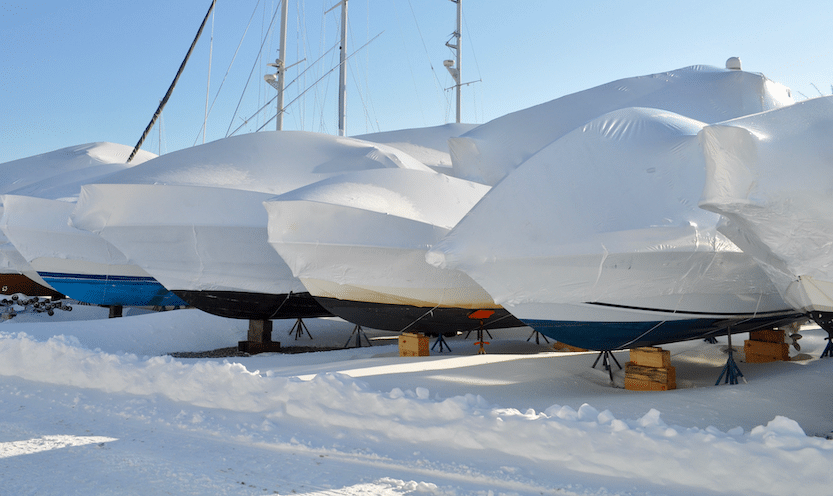On November 10, the U.S. Department of Commerce’s Bureau of Economic Analysis (BEA) released updated economic data, including national and state level data for both 2018 and 2019, on outdoor recreation’s significant economic impact on the U.S. economy including national and state level data for both 2018 and 2019, showing $788 billion in economic output, comprising 2.1% of U.S. GDP and supporting 5.2 million jobs.
Recreational boating and fishing generated the largest economic impact for the nation, at $23.6 billion in value added. Our industry was the largest economic contributor in 30 states and the District of Columbia, and the second largest contributor in 11 states.
“This year’s data solidifies what we’ve been hearing from our members across the nation: People of all backgrounds are rediscovering the outdoors, and spending more time out on the water and on the trails with their friends and family,” said Matt Gruhn, president of the Marine Retailers Association of the Americas. “With recreational boating and fishing leading the way, this report shows how the outdoor recreation community is uniquely positioned on the ground to bolster rural economies through and beyond our nation’s economic recovery, and to better work with legislators at all levels thanks to this data.”
This is the third consecutive year that BEA released data on the outdoor recreation economy, and the third year the industry has shown growth across the board. This release shows how this growing sector was growing rapidly prior to the pandemic and where it can lead again as an economic growth engine and job creator.
Key Highlights from BEA’s new report on the outdoor recreation economy:
- Outdoor recreation makes up 2.1 percent of U.S. GDP, generating $788 billion in gross output and supporting 5.2 million jobs.
- In terms of economic output, boating/fishing, RVing, hunting/shooting/trapping, motorcycling/ATVing, and equestrian sports are the five largest conventional outdoor recreation activities.
- Recreational boating/ fishing generated $23.6 billion, and was the largest economic contributor in 30 states and the District of Columbia, and the second largest contributor in 11 states.
- The top states where outdoor recreation accounts for the largest percentage of each states’ total GDP are Florida, Hawaii, Maine, Montana, Vermont and Wyoming.
- The top five states where outdoor recreation accounts for the largest percentage of total U.S. GDP are California, Florida, Illinois, New York and Texas.
“In many ways, the uptick in outdoor recreation activity during the pandemic only reinforces the findings in the 2018 and 2019 data, showing that recreational boating, fishing, and the broader outdoor recreation industry are sectors we should further invest in as we look towards recovery,” said Frank Hugelmeyer, president of the National Marine Manufacturers Association. “This report provides invaluable insights about the role of the outdoor recreation industry in boosting regional economies all over the country and will be vitally important as we work with policymakers to provide meaningful investments and expand access to our nation’s favorite pastimes.”
“This year’s data on the impact of the outdoor recreation economy is reaffirming for the entire outdoor recreation industry, particularly after the last few months we have all had,” said Jessica Turner, executive director of the Outdoor Recreation Roundtable (ORR). “The fact the industry generates $788 billion in output, comprises 2.1% of U.S. GDP and supports 5.2 million jobs is huge for the U.S economy, rural and gateway communities and Americans looking for jobs or to start a career in a growing and powerful industry. This, combined with the recent passage of the Great American Outdoors Act, bolsters the benefits of the outdoor recreation economy and our efforts to ensure all Americans have access to our public lands and waters.”
“The outdoor recreation data from the Bureau of Economic Analysis is invaluable in helping us grow and support the outdoor industry in North Carolina,” said Amy Allison, director of the North Carolina Outdoor Recreation Industry Office. “These numbers show the strength of the outdoor recreation industry as a powerful economic driver in our state, and will help us to move the needle toward positive action that supports the industry and supports a healthy infrastructure of public lands that is vital to our economic growth.”
“In Montana we understand the far reaching benefits and impacts of a healthy and vibrant outdoor recreation economy on nearly every facet of our lives and livelihoods,” said Rachel Schmidt, director of the Montana Governor’s Office of Outdoor Recreation. “Having this economic data is vitally important to forming the best policy decisions to support and enhance the recreation economy at every level of government in the country.”
America’s outdoor recreation community, represented by the Outdoor Recreation Roundtable, continues to support the Outdoor Recreation Satellite Account (ORSA) – the official name for the project. Just like is the case for many other industries, the goal is to provide annual data on the economic importance of national and regional outdoor recreation economies that can be tracked for years to come.




